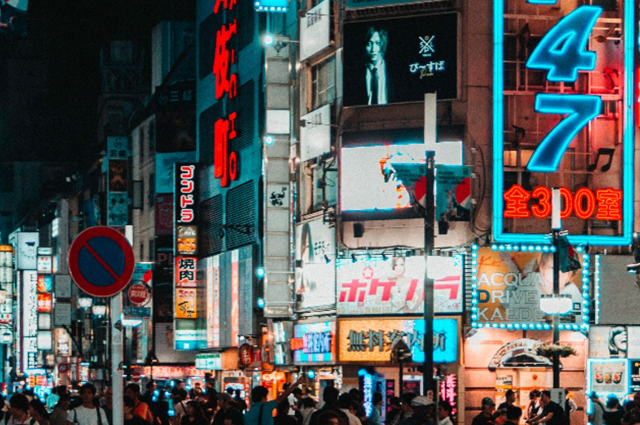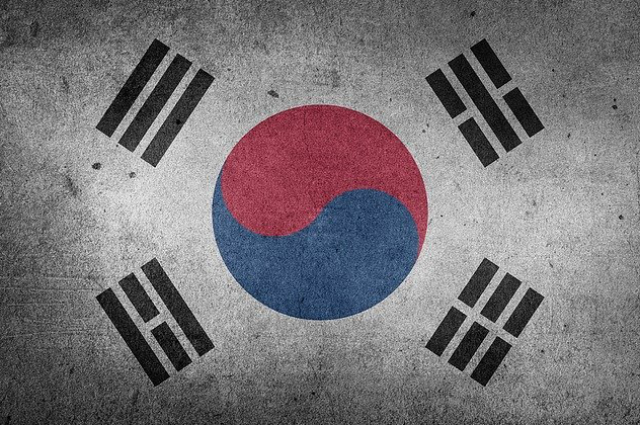
Hallyu, more popularly called the Korean wave refers to the massive popularity of Korean culture spread globally. Hallyu is literally translation into Korean wave in Chinese.
South Korea is one of the only countries that has become the leading exporter of entertainment in the world. From TV shows to music to movies to online games to cuisine, Korean culture has become an international trend.
It all started in the mid-1990s when the TV drama named ‘What is Love’ aired in China and surprisingly ranked second in China’s all-time imported video content. Hallyu landed in Japan when the KBS TV drama series ‘Winter Sonata’ was aired. It became a mega-hit and the actor was nicknamed “Yong-sama” meaning royalty. In India, the influence was gradual. From ‘Gangnam style’ by PSY to BTS, it took some time for the invasion of Hallyu to hit India. In 2019-2020, during the pandemic is when India starting fully riding the K-wave.

There were many factors that helped Hallyu expand but the most important factor was the decision of the Korean government to ban censorship laws. This provided boundless opportunities and independence to youngsters to express newer and bolder topics. The constant support from the government helped the spread of Hallyu immensely.
Hallyu was a way for Korea to develop its ‘soft power’. Soft power refers to the power a country wields through its image rather than hard forces like the military or economy. Many countries can take an example from South Korea on how a country can be developed using soft power. Recently in 2019, Hallyu had an estimated USD 12.3 billion boosts on the Korean economy.
Over the last two decades, South Korea has become very rich and very futuristic. In 1965, Korea’s GDP per capita was less than that of Ghana. Today, South Korea is the world’s 12th largest economy. Even South Korea’s international tourist growth is forecasted at an annualized rate of 3.3% to hit around 1.8 billion by 2030.
One of the main strategies of Hallyu was to carefully study its target audience. They mainly included Asian countries as they could relate better to the content that was delivered. Most shows were based on innocent love and family melodrama that Asian youth seemed to love.
Invasion into India
In the past decade, the influence of Hallyu in India was mainly centralized to the North-Eastern states such as Mizoram and Manipur where people have closer interaction with East-Asian cultures. But now, it is spread across India. According to a demographics study done by Twitter, India ranks 10th position on the chart that depicts countries engaging in K-pop content, with Indonesia topping the charts.
But the question still remains as to why did K-content become so popular in India?
It may be due to the fact that artists included captivating aspects like recurring storylines or messages into their music. For example, the boyband BTS released an album called “Love Yourself” that conveys the message of self-love and acceptance, letting go of hate, and spreading kindness to the world. They even delivered a speech in UNICEF the centered on the idea that ‘true love first begins with loving myself'. There is a popular opinion that such songs work provides strength and reassurance to listeners and works like medicines to cure stress and anxiety. Artists like KARD have also held concerts in India.
Korean dramas have also captured many audiences as many find similarities in the cultures. For example, the 2013 released drama ‘The Heirs’ depicts strict wealthy parents who interfered with all their children’s decisions – a common Indian trope. However, clear differences are also noticed. K-Dramas are more character-driven. They show the development and transformation of the main leads rather than showcasing fight scenes or explicit content like American shows or portray cliché plots that get repeated over and over again.
Korean movies like Train to Busan (2016) and the Oscar-winning movie, Parasite (2019) too are very much beloved in India.
Furthermore, the pandemic introduced Indians to Korean cuisine as creators started to showcase food-related videos on most social platforms like YouTube, Instagram, and Tik Tok. This paved way for many Korean restaurants to open up like the Daily Sushi, located in Bangalore which became a popular post-pandemic. Also, startups like KoriKart, which is an online Korean supermarket based in India which only became famous after the pandemic. The CEO and Founder of KoriKart, Seo Youngdoo, predicts that if the same demand for Korean goods continues, the company might become as popular as Amazon.
Companies like The Face Shop, which sells Korean beauty products also predict the same. It is seen that 90% of beauty products used by women in India as Korean. Like the brand AmorePacific, Secret Key, Nature Republic to name some of them. The popularity may be due to the fact the Koreans are generally depicted with flawless and radiant skin.
Many Korean-based brands like Samsung, LG, Hyundai, and Kia have become popular in India. These brands have used Kpop artists, commonly called idols, as endorsers which attract a lot of consumers. Like Samsung’s new Galaxy S20+ series which sold out in less than an hour when they had BTS as brand ambassadors and JOY of Red Velvet endorsing Tod.

There have also been projects like Z-pop, where Asians can join training similar to Kpop and can follow their dreams of becoming an idol. For example, the Indian Kpop girl group 5-Feet is comprised of 4 girls all based from North-Easter states.
Oscar-winning director, Bong Joon-Ho once said “once you overcome the one-inch barrier of subtitles, but can enjoy many more incredible movies”. Similarly, all these instances suggest that language is not a barrier the deters fans from enjoying foreign entertainment. Rather it is a way to integrate the world into one big happy sphere.

